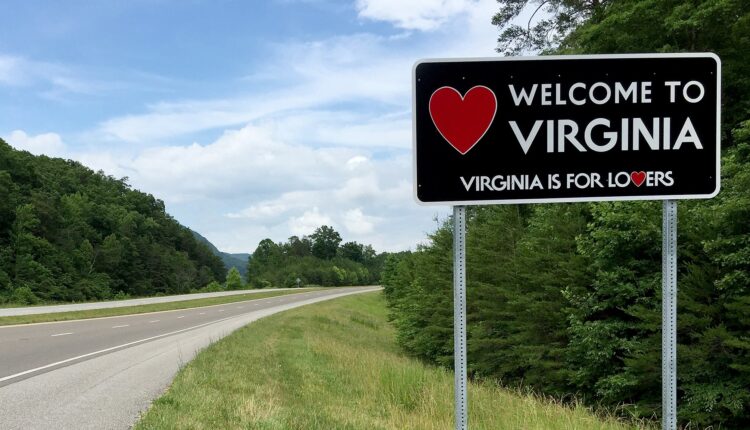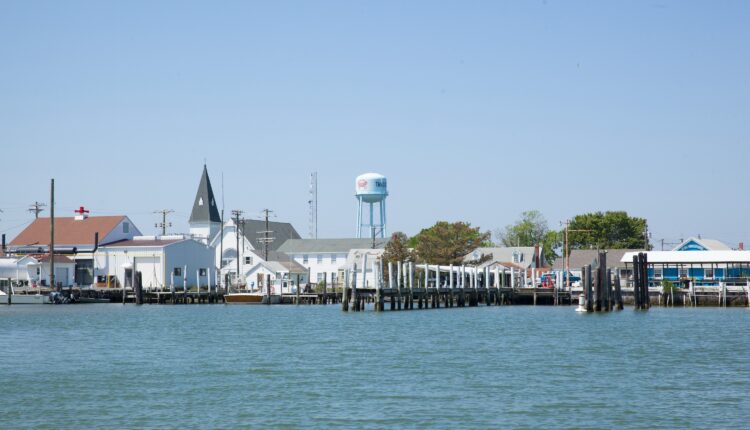
Rockingham County's Mole Hill was once an active volcano. (Kipp Teague/CC BY-NC-ND 2.0)
Here’s the surprising history of Virginia’s volcanic past, including Mole Hill and Trimble Knob.
When most people think of Virginia, volcanoes don’t typically come to mind the way that they do for Mount St. Helens and Washington. But scattered across the unlikely Shenandoah Valley are geologic remnants that tell a fiery story about the commonwealth’s past.
Mole Hill in Rockingham County and Trimble Knob in Highland County may look like unassuming hills but are actually the ancient remnants of volcanoes—two of the youngest volcanic features on the East Coast, to be precise. Dating back approximately 48 million years, these two sites have long since ceased spewing magma, but their rocky cores have provided researchers with valuable insights into their explosive origins.
As a result of their proximity to James Madison University, researchers there have focused on the two sites. They’ve found unique features of both that point to their eruptions and the basalt formations that followed. And although the sheer age of the sites means that erosion has taken its toll, the geologic landmarks still stand as representations of Virginia’s unexpected ancient past.
Mole Hill
Location: Rockingham County
A little over two miles west of Harrisonburg in the Shenandoah Valley lies Mole Hill, which, although it resembles a hill, was once the site of a volcano. The rock around the Rockingham County volcano dates back 48 million years, to a time when an eruption spewed magma to the surface, according to WHSV.
Despite its age, it’s one of the youngest volcanoes on the East Coast. The hill is described as the solidified core of a long-dormant volcano. Today, erosion has sanded away many of the features, but the cone shape is still visible.
Experts from James Madison University have been studying the hill for years. One notable finding is the hexagonal shape of the rocks at the site, which suggests that the magma cooled from the outside in.
Rockingham County has been an area of focus for researchers, especially those from James Madison University, as the formation of the region’s mountains resulted in fractured rock layers. This gave way to molten rock that rose to the surface. It eventually cooled, forming dark igneous, or volcanic, rocks that can still be seen today.
The rocks largely appear narrow and sheet-like because they cut through the surrounding layers. Described as being only a few feet thick, they can be identified by those with a discerning eye by their brown and rounded surfaces.
Unfortunately, Mole Hill, which is surrounded by farmland, is privately owned and therefore not accessible to the public.

Trimble Knob
Location: Highland County
You wouldn’t suspect Highland County, which is situated at the far end of the Shenandoah Valley, to be the home of a volcano. However, the area’s Trimble Knob is a plug of what is described as an ancient volcano. Despite its age, it’s still the youngest volcano in the commonwealth.
A study by the James Madison University Department of Geology and Environmental Science shows that the volcano experienced a two-stage eruption. The first eruption is described as quite harsh, having pushed old rocks to the surface. The second was less abrupt.
Those who want to marvel at the summit, which can be mistaken for an average hill, can do so by traveling along US 220, with Mill Gap being the closest town.

Volcanic rocks
These two volcanoes are part of a larger volcanic landscape that researchers from James Madison University have been studying. Surprisingly, tens of small volcanic features have been found between Virginia and West Virginia, according to NASA.
In other parts of the region, volcanic rocks in the form of large clusters of basalt, or rock formed by cooling magma, can be found. Resulting from the severing of ancient supercontinents, they reportedly date back 560 to 200 million years ago.
Eruptions are highly unlikely
The mere presence of volcanoes forces one to question whether they might erupt. However, the Virginia Department of Energy said that the risk is “extremely unlikely.” In fact, the last time a volcano erupted in the commonwealth was 47-48 million years ago.
Virginia does, however, hold the distinction of being home to the youngest volcanic rocks along the East Coast of the United States. As such, there are well-known hot springs in Bath, Highland, Augusta, and Rockingham counties. While some of the ancient springs are dormant, others are still active.
The department stressed that these springs shouldn’t be considered a volcanic threat because they’re likely warmed by water that runs deep underground, following cracks in the earth. This means that the water isn’t being warmed by a nearby source of heat, like recently cooled magma.
Additionally, the nearest active volcano is more than a thousand miles from Virginia. Even the most volcanoes in the U.S. that have been deemed as posing the biggest threat to humans all fall west of the Rocky Mountains, according to the U.S. Geological Survey. As such, the department rates the possibility of ash from one of those volcanoes reaching Virginia as low.
Learn more about volcanoes
Those who want to learn more about volcanoes may consider a trip to the Science Museum of Virginia in Richmond, where the exhibit “Volcanoes—The Tires of Creation” is shown in The Dome.
The 45-minute presentation tells the story of how, over the course of billions of years, volcanoes have formed the Earth’s landscape. While it doesn’t cover all 500 active volcanoes in the world, it does highlight the archaeological findings of Pompeii, hydrothermal vents found on the ocean floor, and the 2018 eruption of Kilauea in Hawaii.
The Shenandoah Valley Discovery Museum in Winchester also has a page dedicated to explaining volcanoes to kids. It even has a page that demonstrates how to build a volcanic eruption using baking soda and vinegar.

Iconic Virginia sayings & slang, explained
Discover the meaning behind popular Virginia sayings, from "Old Dominion" to "757" and "Hokie." If you’ve spent any time in Virginia, you’ve likely...

A brief (but far from boring) history of Tangier Island
Discover the rich history of Tangier Island, from Indigenous fishing grounds to a War of 1812 freedom sanctuary. Rising barely above the Chesapeake...

12 key stops on the Underground Railroad in Virginia
Discover key sites in Virginia connected to the Underground Railroad and the courageous stories of freedom seekers and their allies. From the 17th...

Black History Month explained: Its origins, celebrations and myths
By HAYA PANJWANI Associated Press WASHINGTON (AP) — Beginning Feb. 1, schools, museums and communities across the nation will mark the start of...

A daily journey through Virginia’s Black history: From Civil Rights to cultural icons
Join us as we take you on a daily journey across Virginia to explore some of the most meaningful ways that Black history shaped the commonwealth....

Learn about Roanoke’s 7 sister cities (on four different continents!)
Explore Roanoke's seven sister cities across four continents, showcasing vibrant cultural, educational, and economic exchanges that foster global...





